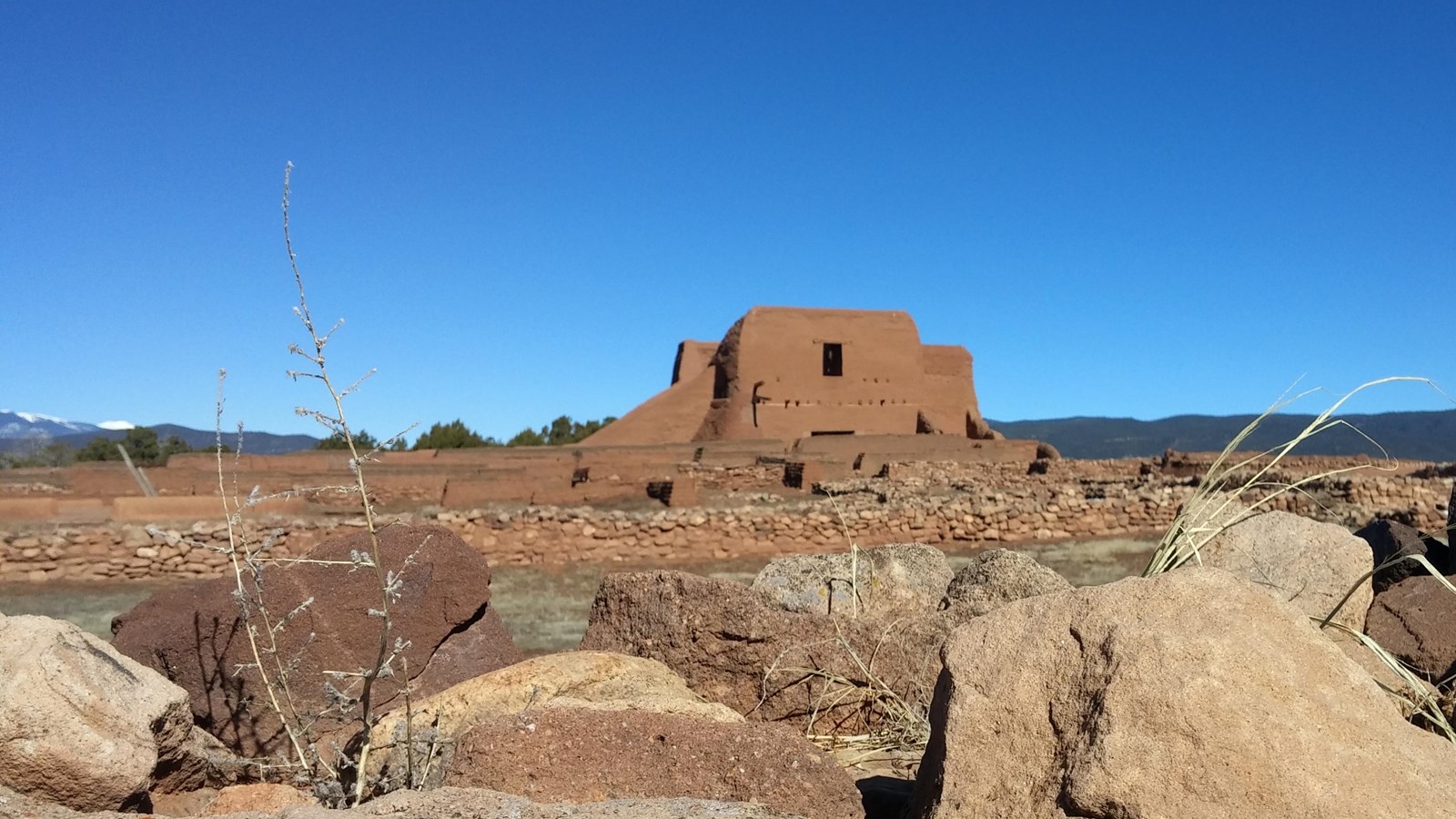Last updated: March 18, 2025
Place
Pecos Mission Church

NPS Photo
Quick Facts
Amenities
7 listed
Parking - Auto, Picnic Shelter/Pavilion, Picnic Table, Recycling, Restroom, Restroom - Accessible, Toilet - Flush
As the Spanish Empire sought to gain control of New Mexico, we can see different agendas at work. The Spanish governors sought wealth, but the Franciscan missionaries sought converts. Between 1617 and 1621, the Franciscan missionary Padre Ortiz oversaw the construction of the first church, located too far from the pueblo to make it successful. By 1625, the Franciscans were allowed to build a new Mission Church just six-hundred feet south of the pueblo. The attached Convento acted as storage, work rooms, and living areas for the missionaries and any Pueblo converts. Construction of the Mission Church and the Convento were supervised by the Franciscans, but Pecos people provided the labor; the Pecos received no pay for their work, raising questions today about the nature of slavery in the Southwest.
An illegal slave trade promoted by officials of the Spanish Crown, exploitation of Pueblo laborers, poor treatment of Pecos religious leaders and interference in the traditional religion, along with the forced tributes of food and goods led the Pecos people to join nearly thirty other pueblos in a successful revolt against the Spanish Empire in 1680. During the revolt, the Church and the Convento were burned, and the adobe walls were reduced to mounds. The Spanish left New Mexico until DeVargas returned to re-establish the colony in 1693.
The church that stands today was completed in 1717. This church was built on the rubble of the 1625 church destroyed in the Pueblo of Revolt, and is noticeably smaller. Though the Franciscans did convert many to Christianity, they did not stop traditional religious practices. The religious customs and traditions live on today at Jemez Pueblo and at other extant Pueblos throughout the Rio Grande Valley. At certain times of the year these Pueblos host Feast Days that demonstrate the cultural blending unique to the region. They often include Mass and traditional Pueblo religious dances.
An illegal slave trade promoted by officials of the Spanish Crown, exploitation of Pueblo laborers, poor treatment of Pecos religious leaders and interference in the traditional religion, along with the forced tributes of food and goods led the Pecos people to join nearly thirty other pueblos in a successful revolt against the Spanish Empire in 1680. During the revolt, the Church and the Convento were burned, and the adobe walls were reduced to mounds. The Spanish left New Mexico until DeVargas returned to re-establish the colony in 1693.
The church that stands today was completed in 1717. This church was built on the rubble of the 1625 church destroyed in the Pueblo of Revolt, and is noticeably smaller. Though the Franciscans did convert many to Christianity, they did not stop traditional religious practices. The religious customs and traditions live on today at Jemez Pueblo and at other extant Pueblos throughout the Rio Grande Valley. At certain times of the year these Pueblos host Feast Days that demonstrate the cultural blending unique to the region. They often include Mass and traditional Pueblo religious dances.
